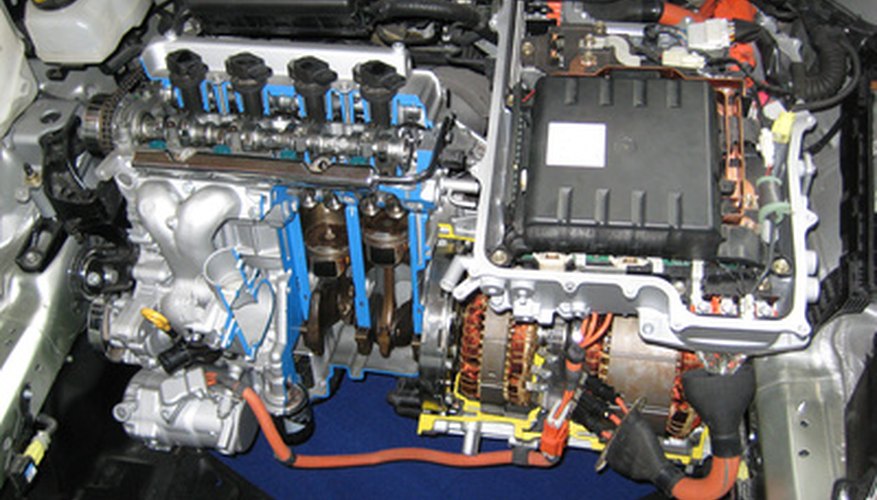Hybrid-electric vehicles combine a conventional gasoline engine with an electric motor to increase fuel efficiency. They do this by storing energy that would otherwise be lost during braking or downhill driving and storing it as electricity in a battery pack, which can then power the car. There are several types of hybrid drivetrains, including series hybrids and parallel hybrids.
Differences
The biggest difference between a series hybrid and a parallel hybrid is the layout of the drivetrain components. In a parallel hybrid, the electric motor and gasoline engine are both attached to a single transmission, meaning that either source, or a combination of the two, can power the vehicle at any given time. On the other hand, a series hybrid only receives its driving power from an electric motor, with the gas engine serving as a generator to charge the battery pack and extend the vehicle's range.
Similarities
In other ways, a series hybrid is very similar to a parallel hybrid. Both have the advantage of increasing fuel efficiency compared with conventional gasoline-powered vehicles, and giving the driver greater range than an all-electric vehicle. Both types of hybrids are reliant on large battery packs to store energy and both types may use additional technologies like regenerative braking to capture energy that would otherwise go to waste.
Benefits
Each type of hybrid vehicle offers certain benefits to drivers that the other type does not. Parallel hybrids perform better at high speeds, since the gasoline engine can function as the primary power source with the electric motor providing extra power as needed. Series hybrids may be able to receive electric power from an external source, as is the case with so called plug-in hybrids. These series hybrids can function as fully electric cars on short trips, reserving the gas engine to produce extra power on extended trips.
- Each type of hybrid vehicle offers certain benefits to drivers that the other type does not.
- Parallel hybrids perform better at high speeds, since the gasoline engine can function as the primary power source with the electric motor providing extra power as needed.
Examples
Most of the hybrid-electric vehicles on the market today are parallel hybrid designs. This is true for all of the vehicles that automakers adapted from existing models. Some of the best selling parallel hybrid vehicles include the Toyota Prius, Honda Insight, Honda Civic Hybrid, Ford Escape Hybrid and Chevy Malibu Hybrid. Series hybrids include the Chevy Volt and the General Motors EV1 from the 1990s.
- Most of the hybrid-electric vehicles on the market today are parallel hybrid designs.
- Series hybrids include the Chevy Volt and the General Motors EV1 from the 1990s.
Drawbacks
Just as each type of hybrid drivetrain has certain advantages, there are also drawbacks to both designs. Series hybrids can only travel a short distance before exhausting their electrical reserves, making them best for drivers who travel short distances. Parallel hybrids rely more heavily on their gas engines, preventing them from achieving the same kind of fuel economy as series hybrids. Some parallel hybrid SUVs may only get around 20 miles per gallon, though this still represents a significant advantage over some of their gas-only counterparts.
- Just as each type of hybrid drivetrain has certain advantages, there are also drawbacks to both designs.
- Some parallel hybrid SUVs may only get around 20 miles per gallon, though this still represents a significant advantage over some of their gas-only counterparts.
